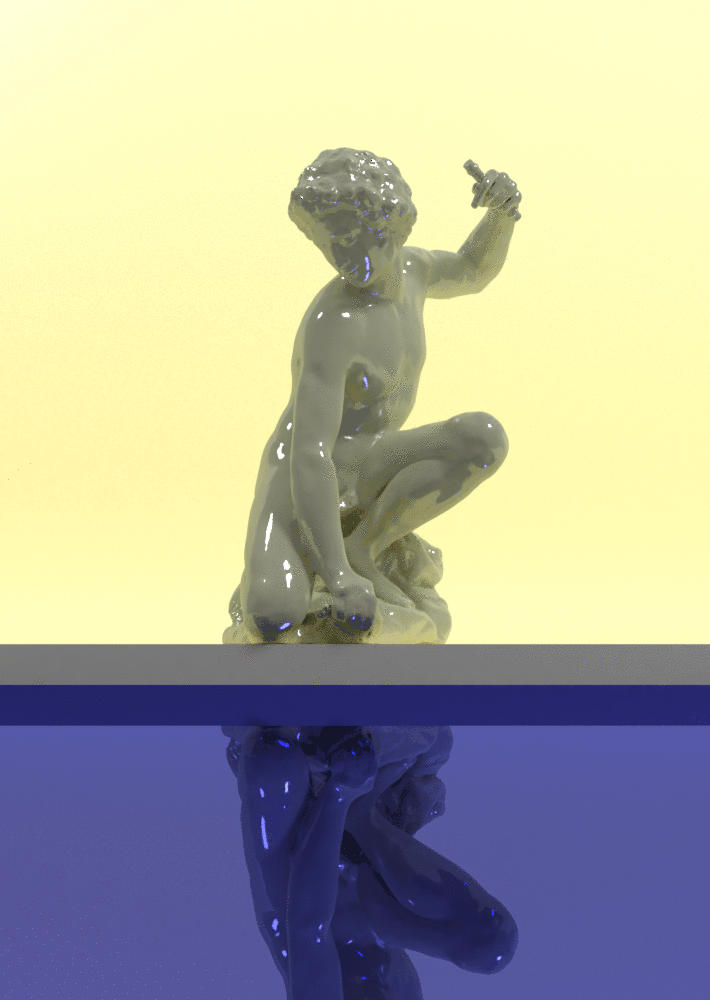Why this Montreal artist is blowing up museum artifacts — in 3D GIFs
ISIS destruction of the Mosul museum inspired this mind-bending project by Pierre Chaumont

See it at the museum, or on your computer. Online archives have been compiling 3D scans of the world's art and antiquities for years, and with the right equipment, anyone could print themselves the Louvre's greatest hits.
Or, like Pierre Chaumont, they could download the open-source files to create a new work of art instead. And Chaumont's series, Mosul, questions the value that gets slapped on the original article.
On this week's episode of CBC Arts: Exhibitionists, we're featuring videos from that particular series. Since the Montreal-based artist started it in mid 2015, Mosul has evolved to involve prints and sculptures and installations and holograms.
The project wrapped in 2017, he says, though a new, never-before-seen piece — "Nothing Lasts Forever (Head of a Boy)" — has been shared with CBC Arts. See it below and on Friday's program.
When it began, the Mosul museum was in the news. The second-largest museum in Iraq, it was infamously looted and destroyed by ISIS vandals who spread video of their sledgehammer-assisted carnage in February 2015.
"I saw the attacks on the Mosul Museum," says Chaumont, "and how the West responded to it by creating a free 3D archive of these 'lost' works."
Sites like Scan the World began collecting, and offering, scans of museum artifacts. But for an open-source project that's technically totally democratic, Chaumont noticed that the collection is largely dominated by just one POV — and it's very traditional and very Western.
An archive that began in response to what happened in Mosul was becoming a backup drive for the biggest Western institutions including the Met, the British Museum, the Louvre — who have the resources to upload scans of their collections.
In his Mosul GIFs, Chaumont warps the files he finds online, picking and choosing intuitively.
A scan of Rodin's Burghers of Calais, for example, gets slimed with animated Velveeta before it mysteriously explodes.
Why? "Because it's a question of power," says Chaumont. "When you present something, you glorify it, may it be positive or negative."
By that logic, the viewer might not have seen the sculpture before — they might not know a single bit ot Wikipedia trivia about it — but they can assume at least one thing. That something? The art they're looking at must have some kind of cultural importance.
Messing with the scans is Chaumont's way of questioning that idea. "To ask, 'What is it that we learn through images?'" Who put it there, and what do they get out of suggesting it has value?
"I wish to trigger curiosity," says Chaumont.
Intrigued?
Check out some selections from Mosul.





Watch CBC Arts: Exhibitionists online or on CBC Television. Tune in Fridays at 11:30 p.m. (midnight NT) and Sundays at 3:30pm (4pm NT).

